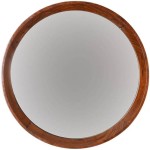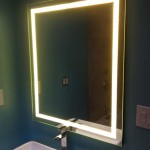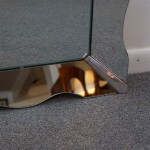How To Use Screen Mirroring On Your Hisense Smart TV
Screen mirroring, also known as screen casting, is a technology that allows the display of a computer screen onto a larger display, such as a Hisense Smart TV. This functionality can be invaluable for presentations, watching videos, sharing photos with family, or engaging in collaborative work sessions. Hisense Smart TVs typically support various screen mirroring technologies, including Miracast, Chromecast built-in, and depending on the model, Apple AirPlay. This article provides comprehensive instructions on how to utilize these technologies to mirror a computer screen to a Hisense Smart TV.
Before attempting to screen mirror, it is essential to ensure that both the computer and the Hisense Smart TV are connected to the same Wi-Fi network. This is a fundamental requirement for most screen mirroring protocols to function correctly. Additionally, it is advisable to update both the TV’s firmware and the computer’s operating system to the latest versions to ensure compatibility and optimal performance. Inconsistent or outdated software can lead to connectivity issues or degraded streaming quality.
Understanding Supported Technologies
Hisense Smart TVs often support multiple screen mirroring technologies, each with its own advantages and requirements. It is importatnt to understand which technologies are supported by the user's specific Hisense TV model. The common mirroring options include Miracast, Chromecast built-in, and Apple AirPlay (on some models). Identifying the correctly supported method will significantly streamline the connection process.
Miracast: Miracast is a wireless display standard that allows devices to connect directly without relying on a Wi-Fi network. It establishes a direct peer-to-peer connection between the computer and the TV. This method is particularly useful when a robust Wi-Fi network is unavailable, but it can sometimes be less stable than other options.
Chromecast Built-in: Chromecast built-in relies on a Wi-Fi network. The computer "casts" content to the TV rather than mirroring the entire screen. This is typically more stable than Miracast and is especially well-suited for streaming video and audio. However, it may not always be the best option for mirroring the entire desktop or specific applications.
Apple AirPlay: AirPlay is Apple's proprietary screen mirroring technology. It is primarily designed for use with Apple devices (iPhones, iPads, and Macs). Some Hisense Smart TVs include support for AirPlay, enabling seamless mirroring from Apple devices. However, this option is not available for Windows or other non-Apple operating systems.
Mirroring with Miracast (Windows)
Mirroring a Windows computer to a Hisense Smart TV using Miracast requires enabling the wireless display feature in Windows settings and ensuring the TV is discoverable. The following steps detail the process:
- On the Windows computer, press the "Windows key + K" to open the "Connect" pane. Alternatively, navigate to "Settings" -> "System" -> "Display" -> "Multiple displays" and click on "Connect to a wireless display."
- Ensure that the Hisense Smart TV is powered on and set to the correct input source. On the TV, locate the screen mirroring or wireless display option in the settings menu and enable it. The exact location of this setting will vary depending on the specific TV model.
- The Windows computer should now detect the Hisense Smart TV as an available wireless display. Select the TV from the list of available devices.
- The TV may display a PIN code or request confirmation. Enter the PIN code on the computer if prompted, or confirm the connection request on the TV.
- Once the connection is established, the computer screen will be mirrored on the Hisense Smart TV. The display settings on the computer can be adjusted to extend, duplicate, or use the TV as the primary display.
If encountering issues, ensure that the wireless adapter drivers on the computer are up to date. Outdated drivers are a common cause of Miracast connectivity problems. Additionally, disable any VPN connections or proxy settings, as they can interfere with the Miracast connection.
Mirroring with Chromecast (Windows and macOS)
Chromecast built-in functionality is primarily used for casting specific content, such as videos from YouTube or web pages from Chrome, rather than mirroring the entire screen. However, the Chrome browser offers functionality that allows mirroring of the entire desktop. The following steps outline the process:
- Ensure the Hisense Smart TV is powered on and connected to the same Wi-Fi network as the computer.
- Open the Chrome browser on the computer.
- Click on the three vertical dots in the upper right corner of the Chrome window to open the Chrome menu.
- Select "Cast..." from the menu.
- A window will appear displaying available Chromecast devices. Select the Hisense Smart TV from the list.
- By default, Chrome will cast the current tab. To cast the entire desktop, click on the "Sources" dropdown menu and select "Cast desktop."
- The desktop will now be mirrored on the Hisense Smart TV. To stop casting, click on the "Stop casting" button in the Chrome browser.
The quality of the screen mirroring when using Chromecast, particularly desktop mirroring, may vary depending on the network conditions and the computer's hardware capabilities. To ensure the best possible performance, close any unnecessary applications and ensure a strong Wi-Fi signal.
For macOS users, this method is similar, but requires the Chrome browser be installed. Safari does not natively offer desktop screen casting functionality to Chromecast devices.
Mirroring with AirPlay (macOS)
If the Hisense Smart TV supports Apple AirPlay, mirroring from a macOS computer is a straightforward process. To enable AirPlay mirroring:
- Ensure the Hisense Smart TV is powered on and connected to the same Wi-Fi network as the Mac computer.
- On the Mac computer, click on the "Control Center" icon in the menu bar (usually located in the upper right corner of the screen).
- In the Control Center, locate the "Screen Mirroring" option.
- A list of available AirPlay devices will appear. Select the Hisense Smart TV from the list.
- If prompted, enter the AirPlay passcode displayed on the TV screen into the Mac.
- Once the connection is established, the Mac screen will be mirrored on the Hisense Smart TV.
To adjust the display settings, such as the resolution or arrangement of the screens, navigate to "System Preferences" -> "Displays" on the Mac computer. The screen mirroring can be stopped by clicking the AirPlay icon in the menu bar and selecting "Turn AirPlay Off."
AirPlay typically provides a relatively stable and high-quality screen mirroring experience, especially when both the Mac and the TV are connected to a strong Wi-Fi network. Apple's AirPlay protocol is optimized for its ecosystem, and this translates to smooth streaming and minimal latency.
Troubleshooting Common Issues
Despite following the correct procedures, users may encounter issues during the screen mirroring process. Some common problems and their potential solutions are outlined below:
Connectivity Issues: If the computer cannot detect the Hisense Smart TV, ensure that both devices are connected to the same Wi-Fi network. Resetting both the TV and the computer can sometimes resolve connectivity problems. Additionally, check the Wi-Fi router to ensure it is functioning correctly.
Performance Issues: Lag or stuttering during screen mirroring can often be attributed to a weak Wi-Fi signal or insufficient computer resources. Try moving the computer and the TV closer to the Wi-Fi router or closing unnecessary applications on the computer to free up resources. Adjusting the display resolution on the computer can also improve performance.
Compatibility Issues: Certain older computers or TV models may not be fully compatible with the latest screen mirroring technologies. Consult the documentation for both the computer and the TV to verify compatibility and update any necessary drivers or firmware.
Firewall and Security Settings: Firewall settings on the computer or security software on the network may be blocking the screen mirroring connection. Temporarily disabling the firewall or security software can help determine if this is the cause of the problem. Configure the firewall or security software to allow incoming and outgoing connections for the screen mirroring protocol.
Driver Issues: When using Miracast, outdated or corrupted wireless adapter drivers can cause connectivity issues. Visit the computer manufacturer's website to download and install the latest wireless adapter drivers.
By addressing these potential issues systematically, users can increase the likelihood of a successful screen mirroring experience between their computer and a Hisense Smart TV.
Optimizing Screen Mirroring Experience
To enhance the screen mirroring experience on a Hisense Smart TV, several adjustments can be made. These refinements will improve picture quality, reduce lag, and guarantee a seamless experience.
Network Optimization: A stable and fast Wi-Fi network is paramount for screen mirroring. Ensure the Wi-Fi router is positioned optimally to provide strong coverage to both the computer and the TV. Consider upgrading to a dual-band or tri-band router to minimize interference and improve bandwidth. If possible, using a wired Ethernet connection for either the computer or the TV can significantly improve performance.
Display Settings: Adjust the display settings on the computer to match the resolution and aspect ratio of the Hisense Smart TV. This can prevent distortion or black bars around the edges of the screen. Furthermore, adjust the refresh rate to a compatible setting for both devices. For most content, a refresh rate of 60Hz is adequate.
Software Updates: Regularly updating the firmware on the Hisense Smart TV and the operating system and drivers on the computer is crucial. Updates often include performance improvements and bug fixes that can improve screen mirroring performance.
Close Unnecessary Applications: Close any unnecessary applications on the computer to free up system resources. Screen mirroring can be resource-intensive, and running multiple applications simultaneously can lead to lag and stuttering. This is especially important for older computers with limited processing power.
Choose the Right Protocol: Select the most appropriate screen mirroring protocol based on the content being mirrored and the network conditions. Chromecast is generally better for streaming video, while Miracast may be more suitable for mirroring the entire desktop. AirPlay offers the best performance for Apple devices.

Hisense Tv Screen Mirroring A Full Guide Airdroid

How To Mirror Windows 11 Laptop Pc Screen Hisense Vidaa Tv Wired Wirelessly

Hisense U6hf Screen Mirroring Setup Wirelessly Connect Phone To Tv

Hisense Tv Screen Mirroring For Iphone Ipad Free App

Connect Hisense Tv To Apple Mac Wireless Screen Mirror App

Hisense Vidaa Smart Tv How To Turn On Airplay Screen Mirroring

How To Connect Mirror Laptop Screen On Any Smart Tv Wirelessly No App

Connect Hisense Tv To Apple Mac Wireless Screen Mirror App

Easy Ways To Connect Hisense Tv Your Phone With Pictures

Tv Projection Steps For Hisense Bjcast








